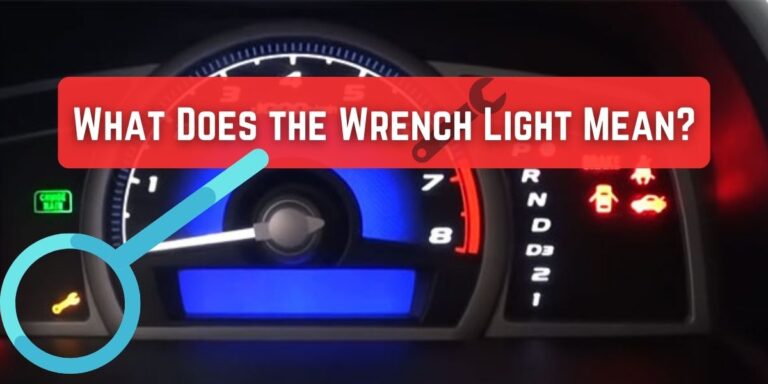How To Check Oil Percentage In Toyota?

In the automotive world, few things are as crucial to a vehicle’s well-being as its engine oil. This lifeblood of the engine ensures smooth operation, prevents premature wear and tear, and ultimately contributes to the vehicle’s overall performance and longevity. For Toyota owners, regularly checking the oil percentage is an essential step in maintaining their vehicle’s health.
The Role of Oil in Your Toyota’s Engine
Engine oil plays a multifaceted role in keeping your Toyota running smoothly. It acts as a lubricant, reducing friction between moving parts and preventing them from grinding against each other. Additionally, oil acts as a coolant, absorbing heat generated from combustion and dissipating it throughout the engine. Furthermore, oil helps protect against corrosion and sludge buildup, maintaining the integrity of engine components.
Why Regularly Checking Oil Percentage Matters
Regularly monitoring your Toyota’s oil percentage is crucial for several reasons:
- Prevent Engine Damage: Insufficient oil can lead to increased friction, overheating, and potential engine damage. Regular checks ensure adequate oil levels, safeguarding your engine’s health.
- Maintain Engine Cooling: Oil contributes to engine cooling by absorbing and dissipating heat. Low oil levels can impair cooling efficiency, leading to overheating and potential damage.
- Protect Against Corrosion and Sludge: Oil contains additives that prevent corrosion and sludge buildup within the engine. These harmful substances can damage engine components and reduce performance.
- Extend Engine Lifespan: By maintaining proper oil levels and ensuring regular oil changes, you can significantly extend the life of your Toyota’s engine.
How to Check Your Toyota’s Oil Percentage
The method for checking your Toyota’s oil percentage depends on the model and year of your vehicle. Two common methods are employed:
- Traditional Dipstick: Older Toyota models utilize a traditional dipstick. Pull it out, wipe it clean, reinsert it, and withdraw it again. The oil level should be between the “FULL” and “ADD” marks.
- Electronic Oil Level Indicator: Newer Toyota models may have an electronic oil level indicator. Sensors measure oil level, displaying the percentage on the instrument panel or infotainment screen.
Toyota Oil Check Method by Model Year
Here’s a table summarizing the oil check method for common Toyota models by model year:
| Toyota Model | Year | Oil Check Method |
|---|---|---|
| Highlander | 2008-2023 | Traditional dipstick |
| RAV4 | 2006-2023 | Traditional dipstick or electronic oil level indicator |
| Camry | 2007-2023 | Traditional dipstick or electronic oil level indicator |
| Corolla | 2009-2023 | Traditional dipstick or electronic oil level indicator |
| Tacoma | 2005-2023 | Traditional dipstick |
Tips for Maintaining Optimal Oil Levels
- Use the Recommended Oil Type: Consult your owner’s manual for the specific oil type and viscosity recommended for your Toyota’s engine.
- Stick to Recommended Oil Change Intervals: Follow the manufacturer’s recommended oil change schedule, which may vary depending on driving habits and vehicle usage.
- Address Oil Leaks Promptly: If you notice any oil leaks, have them repaired immediately to prevent further oil loss and potential engine damage.
- Monitor Oil Quality, Color, and Consistency: Dark, sludgy, or burnt oil indicates the need for an oil change, regardless of mileage or time.
How Often Should You Check Your Toyota’s Oil Percentage?
The frequency of checking your Toyota’s oil percentage depends on several factors, including your driving habits and vehicle usage. However, as a general rule of thumb, it is recommended to check your oil level at least once a month. This is especially important before long trips or under harsh driving conditions, such as frequent stop-and-go traffic or extreme temperatures.
Just as the human body needs regular nourishment to function optimally, your Toyota’s engine relies on engine oil to keep its components running smoothly and efficiently. Regular oil checks are essential for maintaining proper oil levels and ensuring your Toyota’s engine performs at its best.
Signs of Low Oil in Your Toyota
Several signs may indicate low oil levels in your Toyota:
- Illuminated Oil Pressure Warning Light: This is a direct indication of low oil pressure, which can result from low oil levels. Prompt attention is required to prevent further damage.
- Unusual Engine Noises: Knocking or tapping sounds from the engine can be caused by insufficient oil lubrication. These noises should not be ignored.
- Visible Oil Leaks: If you notice oil leaks underneath your vehicle, it’s a clear sign that oil is being lost. Prompt repair is necessary to prevent further leaks and potential engine damage.
- Increased Oil Consumption: If you’re noticing that your Toyota is consuming more oil than usual, it could indicate a leak or other underlying issue. Consult a qualified mechanic for further evaluation.
General Steps for Checking Oil Percentage in Your Toyota
Regardless of the method used, the general steps for checking oil percentage in a Toyota vehicle are as follows:
Step 1: Park Your Toyota on a Level Surface and Allow the Engine to Cool Down
Before embarking on the oil check process, it’s essential to park your Toyota on a level surface and allow the engine to cool down adequately. This ensures an accurate oil level reading and minimizes the risk of burns from hot engine components.
Parking on a Level Surface:
- Choose a flat, even area to park your Toyota. This prevents oil from settling unevenly, providing a more accurate oil level indication.
- Engage the parking brake to secure the vehicle and prevent it from rolling.
Cooling Down the Engine:
- Turn off the engine and allow it to rest for at least 5-10 minutes. This gives the oil time to settle back into the oil pan, providing a more precise oil level measurement.
Step 2: Locate the Dipstick and Remove it from the Engine
Once the engine has cooled down, proceed to locate and remove the dipstick. It typically resides on the driver’s side of the engine, near the oil filler cap. The dipstick usually has a bright yellow or orange handle for easy identification.
Removing the Dipstick:
- Gently pull the dipstick straight out of the tube. It may be slightly stuck, but it should come out easily with a gentle tug.
- Wipe the dipstick clean with a clean rag or paper towel to remove any oil residue.
Step 3: Clean the Dipstick and Reinsert it Back into the Engine
To ensure an accurate oil level reading, it’s crucial to thoroughly clean the dipstick before reinserting it.
Cleaning the Dipstick:
- Use a clean rag or paper towel to wipe off any oil residue from the entire dipstick, including the tip and the handle.
- Avoid using harsh chemicals or solvents to clean the dipstick, as these can damage the material and affect the oil level reading.
Reinserting the Dipstick:
- Carefully insert the dipstick fully back into the tube until it stops. Do not force the dipstick into the tube.
- Allow the dipstick to sit for a few seconds before removing it again.
Step 4: Remove the Dipstick Again to Check the Oil Level and Percentage
After reinserting the dipstick, pull it out again to check the oil level and percentage.
Checking Oil Level:
- The dipstick will have two marks: “FULL” and “ADD”. The oil level should fall between these two marks.
- If the oil level is below the “ADD” mark, you need to add more oil. Consult your owner’s manual for the recommended oil type and quantity.
- If the oil level is above the “FULL” mark, you have overfilled the engine. Remove some oil to bring the level within the recommended range.
Checking Oil Percentage:
If your Toyota has an electronic oil level indicator, you won’t need to check the dipstick. Simply refer to the display on the instrument panel or infotainment screen to see the oil percentage.
Step 5: Interpret the Results and Determine If an Oil Change is Needed
Based on the oil level and percentage readings, assess whether an oil change is necessary.
Interpreting Oil Level Readings:
- Oil level between “FULL” and “ADD” marks: If the oil level is within the recommended range, continue monitoring the oil level regularly.
- Oil level below the “ADD” mark: Add the recommended type of oil according to your vehicle’s owner’s manual.
- Oil level above the “FULL” mark: Remove some oil to bring the level within the recommended range.






